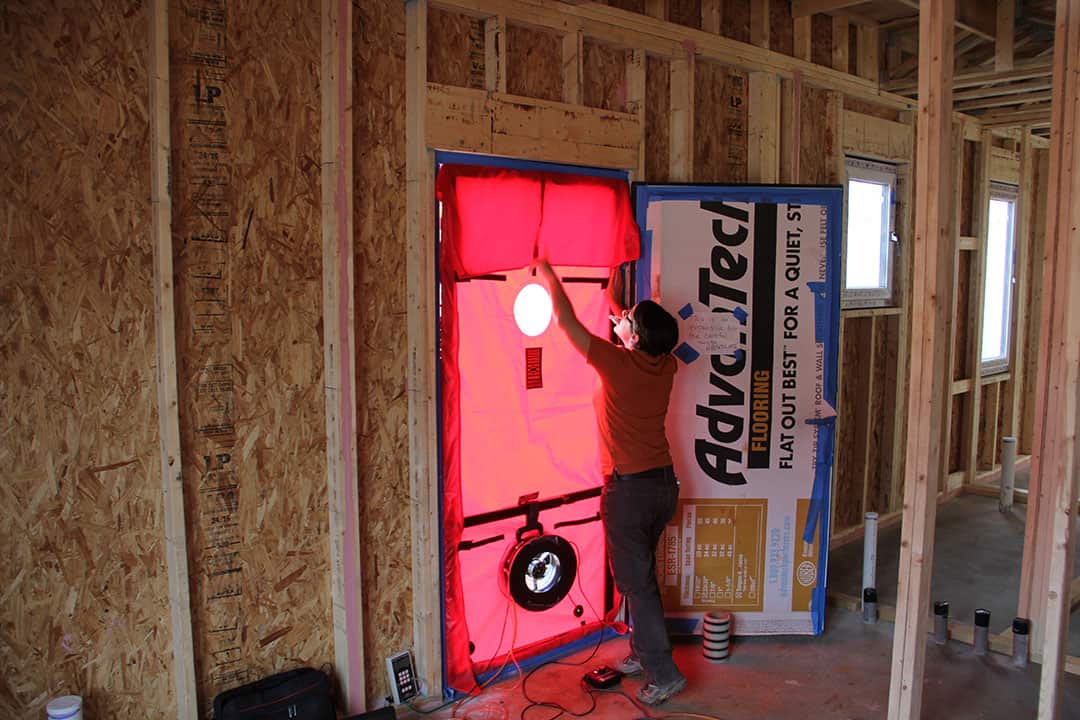A Blower Door Test is a method used to assess the airtightness of a building by measuring how much air leaks through various points when the structure is pressurized. This test is essential for determining how energy-efficient a building is and identifying areas that need improvement.
Key Components of Blower Door Test Results
The results of a Blower Door Test provide several key metrics that help evaluate the performance of a building’s envelope:
-
Air Changes Per Hour (ACH50): This is the number of times the air within the building is exchanged with outside air per hour at a pressure difference of 50 pascals. A lower ACH50 indicates better airtightness.
-
CFM50 (Cubic Feet per Minute at 50 Pascals): This metric shows the volume of air leakage in cubic feet per minute at a 50-pascal pressure difference. It gives a clear picture of the amount of air leaking through the building's envelope.
-
Equivalent Leakage Area (ELA): This represents the total size of all the leaks in the building if they were combined into one large hole. The ELA helps visualize the extent of air leakage.
Interpreting Blower Door Test Results
Understanding the Blower Door Test results involves comparing the metrics to standard benchmarks:
-
ACH50 Values:
- Below 3.0: This is a target for energy-efficient buildings, indicating excellent airtightness.
- Between 3.0 and 5.0: This range is typical for average homes.
- Above 5.0: Indicates significant air leakage and a need for improvements.
-
CFM50 Values: Should be considered in relation to the building’s size. Larger buildings can tolerate higher CFM50 values, but overall, lower values are better.
Implications of High Air Leakage
High air leakage rates in the Blower Door Test results suggest that the building is not well-sealed, leading to several potential issues:
- Increased Energy Costs: More energy is required to maintain a comfortable indoor environment, leading to higher utility bills.
- Comfort Issues: Drafts and inconsistent temperatures may result from significant air leakage.
- Moisture Problems: Air leaks can carry moisture into the building, leading to condensation and potential mold growth.
Steps to Improve Airtightness
Based on the Blower Door Test results, you can take the following steps to improve the building’s airtightness:
-
Seal Penetrations: Focus on sealing any gaps around windows, doors, and other penetrations like pipes and electrical outlets.
-
Upgrade Insulation: Ensure that insulation is adequately installed, particularly in areas prone to leakage like attics and basements.
-
Install High-Performance Windows and Doors: Consider upgrading to energy-efficient windows and doors with better sealing properties.
-
Use Air Barriers: Apply air barriers during construction or renovation to minimize air leakage through the building envelope.
Conclusion
Blower Door Test https://blowerdoortesting.org results are invaluable for understanding the energy performance of a building. By interpreting these results and addressing any issues identified, you can significantly improve the airtightness, energy efficiency, and comfort of your building. Taking action based on these results is an investment in the long-term performance and sustainability of your property.



